- Home
- New Kyurizukai
- Field Robotics
from Keio's Faculty of Science and Technology
Field Robotics
from Keio's Faculty of Science and Technology
Robots making their marks in extreme environments, including other planets and active volcanoes
I would like to share the excitement of the capsule retrieval campaign during the Hayabusa project with young people
Ishigami-san, whose career has included being a JAXA researcher. While he continues today to participate in exploration projects, including one intended for Mars and its satellites, he recounts that his memory of the excitement he tasted during the capsule retrieval campaign for the Hayabusa asteroid probe, which he experienced immediately after becoming a JAXA researcher, remains undiminished even today. This was an outstanding deed realized by the passion of the researchers. “I want the next generation to taste the delights and excitement of being a researcher,” says Ishigami-san.
Genya Ishigami
Associate Professor at the Department of Mechanical Engineering, Faculty of Science and Technology, Keio University. Ph.D. in Engineering. Specializes in field robotics, space exploration engineering, terramechanics, and autonomous mobility systems. Graduated from the Department of Mechanical and Aerospace Engineering, School of Engineering, Tohoku University in 2003. Completed doctorate majoring in Aerospace Engineering at the Graduate School of Engineering, Tohoku University in 2008. Research Associate at the Japan Aerospace Exploration Agency from 2010 following a Postdoctoral Associate at the Massachusetts Institute of Technology (MIT). Enters the Faculty of Science and Technology, Keio University in 2013 as an assistant professor, assuming current position in 2017. Born in Miyagi Prefecture.
The Research
The latest bulletin features Associate Professor Genya Ishigami, who develops robots exploring in space, volcanoes, and at the sites of natural disasters.
Development of robots for use in extreme environments through research in diverse domains
Including robots which will be of service for natural disasters, agriculture, and logistics chains based on research outcomes
“I want to make robots which help people,” says our subject Ishigami-san, who is also developing robots to take on traditionally human tasks, with a particular emphasis on robots conducting surveys and other manual tasks, as well as carrying heavy loads, for use at locations such as the moon, Mars, and the sites of natural disasters, which cannot easily be accessed by humans.
The four basic fields of robot research
Technologies from various disciplines, such as mechanical engineering, electronic engineering, control engineering, and computer science, are encapsulated in a single robot. While most researchers specialize within either of these particular domains, Ishigami-san is engaged in research and development on the diverse aspects which relate to robots.
“I started out doing terramechanics, which is a critical concern when a mobile robot travels on rough terrain,” says Ishigami-san. When robots move over the surface of the moon, the terrain surface is loose and non-uniform. A dynamic approach is required to investigate how a wheel would perform on the surface of the moon, scattered as it is with a mixture of sands and rocks.
Having grasped the terrain, the robot dynamics came to attract his attention. He also tackled questions as to how the bodywork of a robot would dynamically move as it attempted to climb over particular obstacles, or whether it would in fact overturn, in the field of multibody dynamics using analyses and computer simulations. This is also used in simulations for probes touching down on the surface of planetary bodies.
Following the body, his interest would turn to robot intelligence. He moved on to the field of “autonomous mobility systems,” hoping to find out how to: “Facilitate a robot in making its own decisions on how it should move.” This kind of research leads in to autonomous driving, including questions of how to control the wheels of a vehicle and what would be the safest potential routes. Computer science deals with this research topic; however, his knowledge and experience of mechanics has served him well and enabled effective analyses and accurate interpretations of results.
This experience of diverse fields will bear fruit in the development of a “sensor wheel.” A sensor wheel is essentially a vehicle wheel equipped with artificial intelligence, similar to sensible skin on the sole of foot. The wheel itself can detect the terrain stiffness, the extent to which it has sunk, as well as the degree of traction beneath the wheel. In addition, the wheel stores test data and improves its traction via machine learning. This has been heralded as an epoch-making outcome in the field of terramechanics.
Another critical issue is “energy management.” Streamlining movement while limiting a robot’s energy consumption are imperatives when operating in extreme environments such as on the surface of the moon. “We use a machine learning algorithm to derive an optimum protocol for power generation control in robots equipped with solar panels, and to plan a robot motion which takes into account of quantity of energy generation, energy consumption, and related factors.” Ishigami-san’s transdisciplinary research experience has been leveraged to realize locomotion which minimizes energy loss, an undertaking that also requires terramechanics know-how.
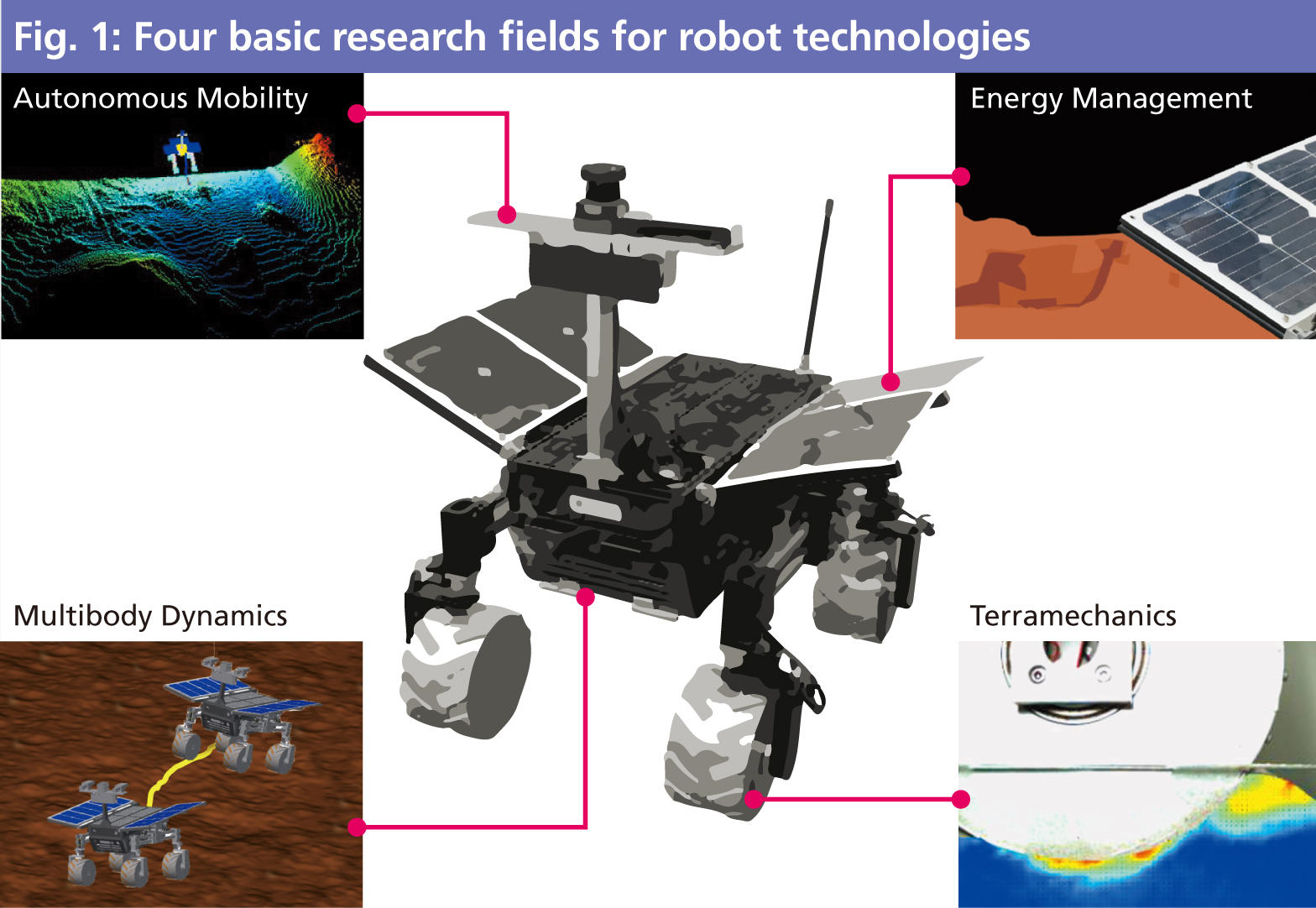
Robots making their mark on Mars, the moon, and volcanoes
Ishigami-san is putting these four basic research areas to use in a variety of applied fields. He says that he is currently involved in three space-related projects. The first is a Mars exploration project led by the Japan Aerospace Exploration Agency (JAXA), which plans to take samples of the Martian surface and subsurface (underground) for a variety of proposed scientific surveys, including searching for traces of life. Ishigami-san has been participating in the capacity of system design and specification for a mobile robot equipped with a scientific probe.
The second project is the Martian Moons eXploration (MMX) project, also being led by JAXA, which aims to launch a space probe in the early part of the 2020s. Like Hayabusa, the project is an asteroid sample-return mission, which will bring back samples from the two Martian satellites of Phobos and Deimos to earth. Ishigami-san tells us that his team is conducting a landing dynamic simulation of the probe.
The third project is for exploration of an underground cavity called a vertical hole, which has been discovered on the moon’s surface. There is a large cavern resembling the caves, or lave tube, at the base of Mount Fuji directly beneath the moon’s surface. There is expectation that this could be exploited as a shelter from solar radiation in future manned exploration on the moon. He also says they are in the process of exploring a miniature robot to be deployed into this vertical hole, and that they have meanwhile conducted a volcano monitoring experiment using a mobile robot on Mounts Mihara and Aso.
Ishigami’s team are presently equipping robots with observational muography devices for surveying cavities inside volcanoes. Muography is a method to observe elementary cosmic particles called muons, which is now in the spotlight as a means to survey volcanoes, and has the potential to facilitate predictions on the size of phreatic eruptions.
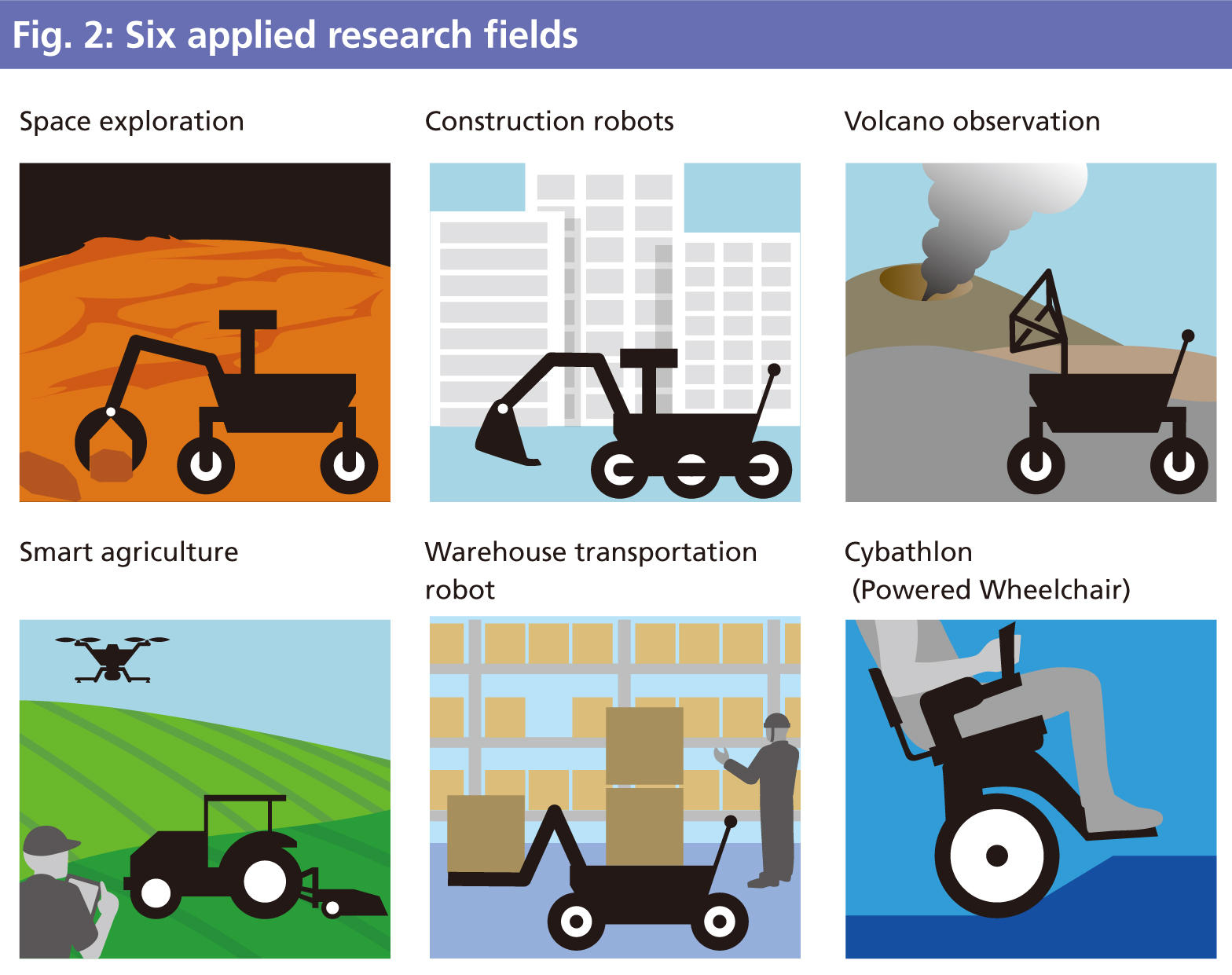
Robots to contribute to load reduction at natural disaster sites and during transportation operations
Teleoperation technologies for robots come into their own at locations such as natural disasters sites. Tough Robotics Challenges (TRC) is a project which aims to realize tough robots for deployment at sites of natural disasters that involves in a part of the Cabinet Office’s “Impulsing Paradigm Change through Disruptive Technologies Program (ImPACT).” Ishigami-san is responsible for dynamic simulations, including those for removal operations of large volumes of rubble piles at the sites of natural disasters using construction vehicles; lifting the roofs off houses which have collapsed due to earthquakes; and rescue operations for any persons trapped inside such buildings.
He is also working with robots to assist with the harvesting of farm produce and the spreading of pesticides using autonomous mobility systems. For example, robots can detect agricultural workers with a mounted camera and follow behind them at a fixed distance such that the robots transport harvested heavy crops instead of the workers. “I would like to be entrusted with [developing] technologies for stable locomotion over soft and uneven agricultural terrain,” says Ishigami-san. It appears that the basic technologies which he has researched can be exploited in this context as well.
He says that, “A similar approach could also be used in a distribution warehouse.” In a warehouse in which a single operator transports several tons in a single day, the assistance of a robot in picking up and transporting cargo would allow for load reductions and the mitigation of personnel shortages. These kinds of robotization have occasionally been met by protests that “robots will take people’s jobs.” To this Ishigami-san replies, “Rather than robots completely taking over the work of people, this would ideally be a question of a set-up whereby robots help to realize the coordination and streamlining to allow people to do what people can do and robots to do what robots can do.”
Participation in powered wheelchair race at international competition
The development of powered wheelchairs is research to actively assist people further. Ishigami-san mentions that one day he happened to be riding the same train as Professor Kohei Ito, Dean of the Faculty of Science and Technology. The original inducement was being asked by the professor, “Ishigami-san, wouldn’t you like to compete in the Cybathlon?” The Powered Wheelchair Race is one event at the Cybathlon, an international competition which aims to put robotics to use for persons with disabilities.
The race involves battling it out against the clock over an obstacle course which includes six obstacles typically encountered by wheelchair users in everyday life. These include negotiating slalom and hills, opening doors using robot arms while seated, and mounting slanting pavements. Ishigami-san made a snap decision to take part and will appear in the Japan leg of the Powered Wheelchair Series set to be held in May 2019.
You cannot leave it at “research for research’s sake”
According to Ishigami-san, “What researchers working on robots must keep in mind is that their research should never be for its own sake.” Although emphasizing the importance of basic research, he says that it is necessary to keep a keen eye on how this research might actually be used on practical real situation, while his guidance to his lab students also encourages a continual awareness of the background to research.
What brought this home to him most strongly was the Great East Japan Earthquake. When the accident at the Fukushima No. 1 Nuclear Power Plant occurred, the first robot dispatched for exploration was a military robot made in the United States, despite the fact that it would have been possible to immediately dispatch a Japanese-made probe robot. While Japanese technology is actually superior to that of the United States, the many people involved with robots in Japan missed out on the chance to contribute immediately and ended up just watching impatiently from the sidelines.
Ishigami-san’s underlying aspiration is to create robots which are useful to and help people at real-world sites.
Interview
Associate Professor Genya Ishigami
Abandons plans to study film-making in the United States
Tell me a little about your childhood.
As an elementary school student, I often spent it playing outside. There was a game trail on a mountain in my neighborhood, and my friends had cut out a path with a sickle. This was the “hideout” around which our play would revolve. At home, meanwhile, I would pass the time staring intently at the turbulence in the twin-tub washing machine or the waves created in the water as the bathtub emptied. I would also take apart ballpoint pens and play with Lego bricks. I have fond memories of beating the sand to make the ground solid and using a spirit level to ensure the foundations were fully horizontal when I helped build a storage room with my father.
During junior and senior high school I busied myself with both basketball and my studies. However, in the spring of my third year of senior high school, I severed a ligament in my leg during a training match with university students. It was on April 29. This was a real blow, as I had been intent on appearing in the final tournament that June. The day I got injured remains with me clearly even today.
You went on to join a space robot lab at university.
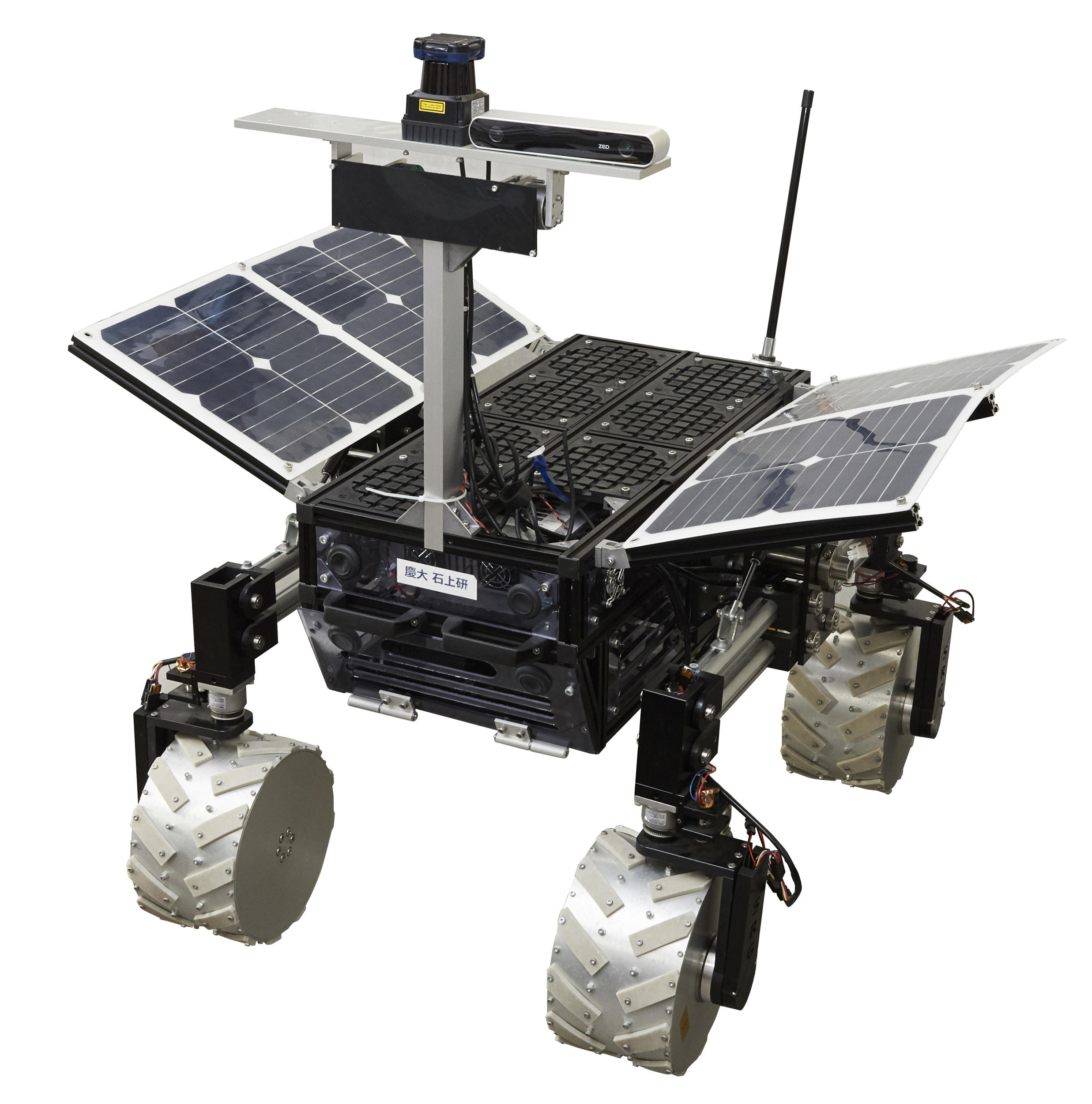
During my high school years, I absolutely loved the movies and was in fact toying with the idea of going down the computer graphics (CG) production path. The day after I quit my after-school club in June of my third year of senior high school, I went to see the movie Titanic, which only strengthened my resolve to pursue the movies route. The latter half of the 1990s was a time when CG was in its ascendancy, and the United States was at the top of the game. This is what set me to thinking that I would like to study abroad at the University of California, Los Angeles (UCLA) with a view to joining George Lucas’ Industrial Light and Magic, or maybe Pixar. After speaking to a company which offered advice on studying abroad, I put together a fairly detailed plan that also took in scholarships, and then spoke to my parents. Unfortunately, as it turned out, there were too many difficulties on the funding end and this plan was abandoned. Then, just as I was contemplating university entrance exams, I learned that there was a space robotics lab at Tohoku University in my hometown of Sendai, and decided to set my sights on getting in there. I got into Tohoku University after receiving a designated school recommendation, and succeeded in entering my laboratory of choice, which was headed up by Professor Kazuya Yoshida, as a third-year undergraduate. I was surprised to discover that they had the CG software 3ds Max at the lab. This was a genuine source of delight, as this is a sophisticated piece of software which is actually used by film production companies. I hope that I managed to be of some use to the research of the lab members as I played around with these various toys. I made a CG movie for my presentation after entering a “Satellite design contest.” I proposed a small satellite mission for meteor observation, with the movie beginning with the launch scene for an H-II rocket, followed by the satellite’s separation, and then the meteor descending at great speed, and this was very well-received.
From doctoral program to researcher on mentor’s advice
When were you finally set on taking the researcher route?
Most students at the Faculty of Engineering join the workforce only after getting their master’s degrees rather than at the end of their undergraduate studies. You would generally start job hunting around the end of the first year of your master’s. However, in April of my second year Yoshida-sensei asked me: “Wouldn’t you like to pursue a doctorate?” This proved to be the turning point, as I was reassured by Yoshida-sensei’s faith in my abilities. In the first year of my master’s, a number of events also reinforced my own sense that I had indeed made substantial progress. For example, I felt that I had found my forte after responses to my participation in satellite design contests as well as CanSat (miniaturized payload satellite) competitions, which are held in deserts around the United States.
I also completed a short-stay study abroad program in Australia at the University of New South Wales during spring break. During this sojourn, my research was received more favorably by the professors and students there than I had anticipated. I was then motivated by my interest in where it might lead me if I studied even harder for a Ph.D. which decided me on entering the doctorate program.
After getting your doctoral degree, you made your way to Massachusetts Institute of Technology (MIT).
After I got my doctorate, and motivated by my desire to study overseas, I made any number of approaches but was still not getting the right answers. These included overtures to NASA while I was still a Ph.D. candidate and to various research institutes in the United States. One of these, however, was an email to Karl Iagnemma of MIT. Karl was producing consistently spectacular papers, and I had already aspired to working with him for some time.
It appears that Karl too was aware of my own existence, and he replied to my entreaties by saying: “As it stands, I reckon MIT can cover half your wages.” At this point, I set about digging up a scholarship to cover the remaining half of my wages, and succeeded in getting funding from the Murata Overseas Scholarship Foundation. I remember being extremely nervous on finding out that Professor Kazuo Yoshida from Keio University was one of the people in charge for the final interview.
Blown away by a robot saving the lives of soldiers
How was life as an MIT researcher?
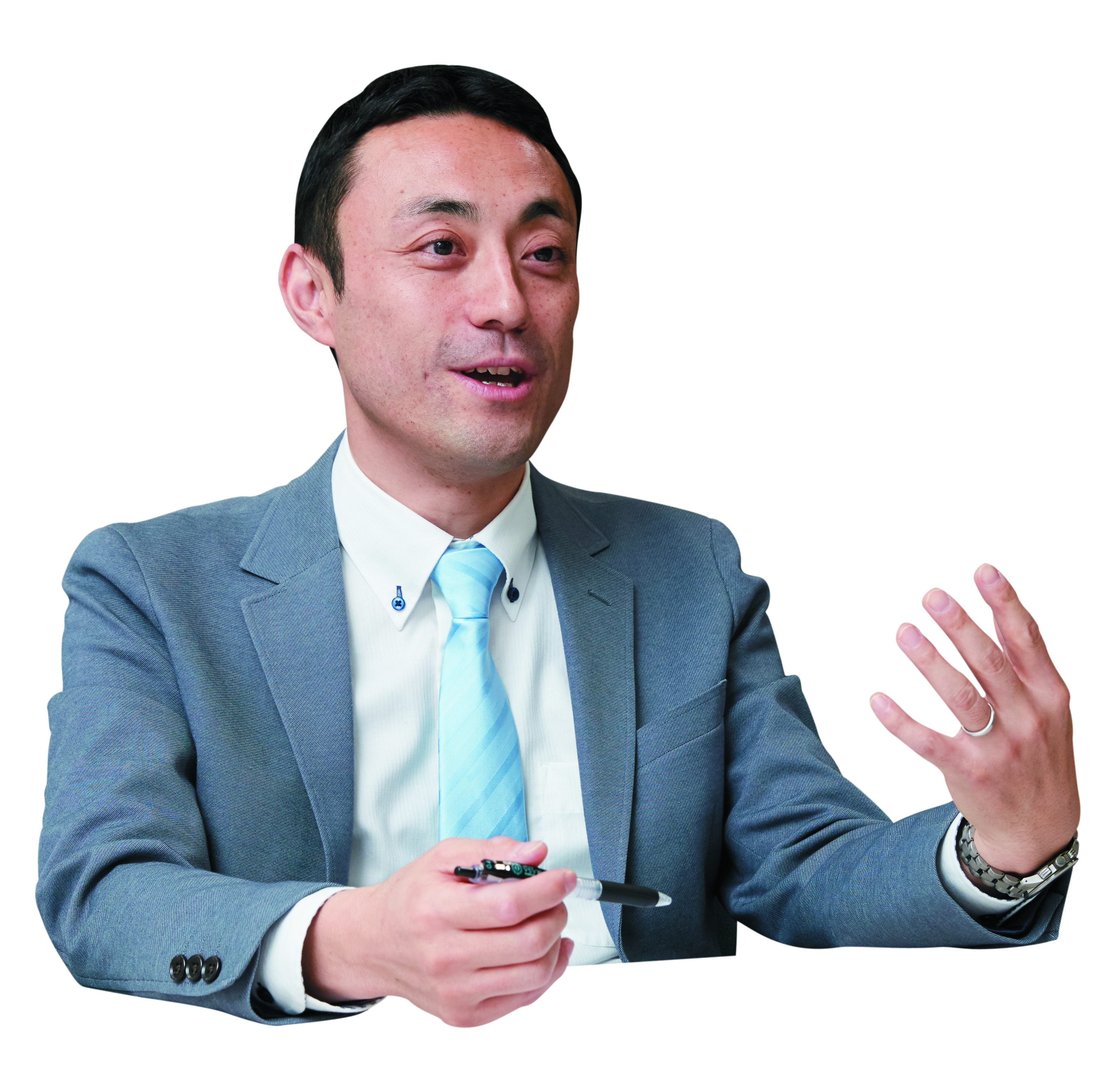
That period was the skinniest I have ever been in my life (laughter). The first three months were distinctly challenging. The rent and taxes were higher than I had envisaged and I would eat just one bagel for lunch—in essence a subsistence-level existence. In addition, I made light of the need for English proficiency, but this was naïve... I was surrounded by gifted students too. One of the graduate school students who I researched alongside in my first year at MIT was a supremely gifted mathematician. If you should mention that you did not how to derive a particular formula in your paper, he would say something like “Really? What’s so hard about that? Using a gamma function would solve this straight way,” with me inevitably replying “I have no idea what a gamma function is.”
Nevertheless, while the laboratory as a whole was largely peopled by theoreticians, Karl valued my contribution as a researcher inclined towards practical work and experiments. In my second year, I got a slight pay raise, started to get used to using English, and really learned to enjoy my life overseas. I was involved in around four projects, including consulting for corporate entities.
The one that stays with me most was a project associated with the Defense Advanced Research Projects Agency (DARPA). On one occasion there was an accident involving a bomb exploding as it was being disarmed by a remote-controlled robot in Afghanistan. I was able to participate in the subsequently-convened DARPA academic conference, where the speech given there by a high ranking officer to the effect that “This robot saved the lives of three soldiers” was greeted by a standing ovation. This was the first time I had encountered a real-life situation in which research outcomes had directly intervened to save lives. I was deeply impressed by the hero’s reception afforded to a robot designed to rescue people.
What made you leave MIT?
When I consulted with Karl about going home he said to me that, “You’ll get a better package in the United States than in Japan,” in the hope that I would stay. I was especially flattered when he told me that: “If you quit I would have to employ around three people to replace you.”
During my time in the United States, I read “Clouds Above the Slope (Saka no Ue no Kumo)” by Ryotaro Shiba. One of the things that heartened me about this book was the depiction of the main character, who was around the same age as I was at that time, giving it his all for Japan. The sheer scale of research funding and development speeds in the United States are in stark contrast with Japan. However my feeling that Japan then was at least 20 years behind NASA in terms of its space program, made me want to do my bit for Japan.
How did you find your work at JAXA after you got back to Japan?
I threw myself into my work at JAXA. I was allowed to present on my potential contributions to the Mars exploration mission at the second meeting in which I participated after hearing about this proposal from my senior colleague Professor Kubota. As a result, my membership of the team was approved and I was also given the chance to present at a mission definition review several years later.
In June 2010, immediately after I assumed my post, I also had the privilege to join the capsule retrieval unit for the Hayabusa ("Peregrine Falcon") asteroid probe. The morning after we had successfully found the capsule on a vast desert in Australia, I was greatly moved by the passionate speech given by Professor Hitoshi Kuninaka who both headed up the retrieval campaign and was the developer of Hayabusa’s ion engine. Having the opportunity to share in the emotion associated with the successful completion of a mission that had spanned some 30 years and generations of researchers at the same time sparked in me a burning desire to help the youngsters of the next generation have similar experiences.
This is partly what led me to turn my sights on Keio University. In fact, I was already being drawn into the gravitational orbit of Keio when I was at JAXA, with one of the researchers to whom I was most indebted in my work then, as today, being an adherent of Professor Kazuo Yoshida who, as I previously recounted, was present at my final scholarship interview for the Murata Overseas Scholarship Foundation.
Spontaneity and dynamism for research success
What do you perceive as the appeals of Keio University?
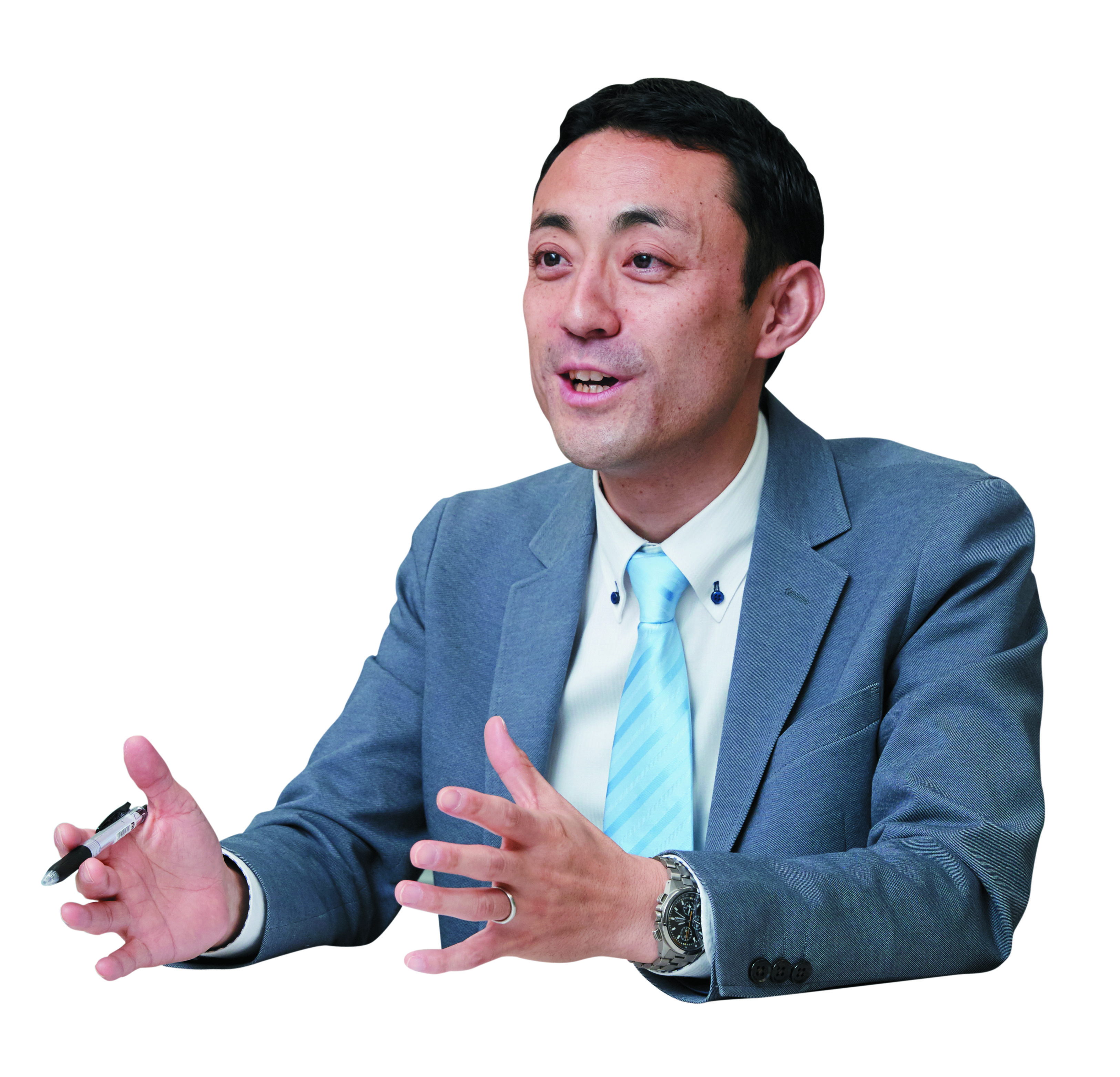
I feel that the ability of the faculty and staff members to unite and work towards a single goal is wonderful. I think this phenomenon is largely unparalleled at other universities. Even if an undertaking has no particular precedent you would never hear “It can’t be done.” Instead people look for solutions together saying “How about doing it this way?” or “Let’s try it like this!”
I also find the relative lack of distance between faculty members and students appealing. This unequivocally works in favor of the research. Soon after I assumed my post I came across Yukichi Fukuzawa’s phrase of hangaku-hankyu, or “learning while teaching, teaching while learning,” and thought that this was a particularly germane way of describing this dynamic. While I may be in the position of teaching, I get a real sense that this also constitutes a position whereby I am taught by and can learn from the students.
What is most important when it comes to research?
The byword or motto of my senior high school was “spontaneous dynamism,” or being a self-starter. I often say to students “don’t become passive or complacent.” If you don’t raise your voice to say “this is what I can do,” no one around you will give you the time of day. If you are sitting around waiting for someone’s permission you will not do good research. As I said when I presented on the Mars exploration mission at JAXA, your work should also assume an attitude of showing off your own particular talents. I want my students to maintain a sense of spontaneity and dynamism in their work.
Another study I am currently involved with requires us to go about our work while keeping in mind “The significance and impact for society at large.”
Some words from Students
● Ishigami-sensei has an extremely generous sense of humor. He is erudite and talented in many fields, meaning that whatever you choose to research he will offer concise and pointed advice. On the flipside, he plays softball with us and is a teacher with whom you can talk about almost anything (4th year undergraduate).
● Ishigami-sensei has never gotten angry with me, nor have I ever seen him angry. The sole account of his ire being raised is known as the “Happy Turn Incident” after a type of popular snack, which occurred during field experiments on Izu Oshima Island and is the stuff of laboratory legend. However, the exact details remain a state secret (laughter). (1st year master’s student)
● Not only did he get down and dirty with the fieldwork on Izu Oshima island, he also took the time to join us for a round of midnight table tennis. When I bring him the fruits of my own ruminations, he will often bless these with a “sounds great.” I can’t count the number of times sensei’s abundant knowledge has helped me. (1st year master’s student)
(Reporter & text writer: Yuko Hiratsuka)


